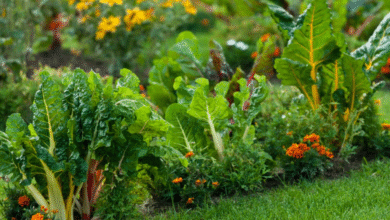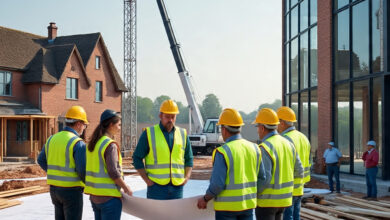Effective Tree Care Practices for a Healthier Environment

Key Takeaways:
- Proper tree maintenance promotes healthier ecosystems and urban landscapes.
- Understanding basic tree care can prevent property damage and increase property value.
- Frequent tree inspections aid in the early detection of problems so that prompt action can be taken.
- Effective pruning ensures trees grow safely and healthily.
The Importance of Regular Tree Maintenance
Trees are indispensable in any environment, whether urban or rural. They significantly contribute to the ecological balance by supplying oxygen, enhancing air quality, and preserving wildlife habitats. Yet, their health cannot be taken for granted. Tree maintenance in Luray and similar regions involves a conscientious approach to care that ensures these stalwart giants continue to serve us while standing strong against the elements.
Regular tree maintenance extends beyond mere aesthetics. It lays the groundwork for longevity and resilience against diseases or external damage. Like humans, trees can suffer from health issues that, if neglected, can lead to premature decay or safety hazards. Therefore, incorporating procedures like regular inspections and pruning is an essential part of a larger plan to preserve these natural resources and ensure they play a significant role in the landscape for many years.
Understanding Tree Health Indicators
For those uninitiated in arboriculture, trees might appear as silent sentinels with little to worry about. However, determining tree health involves being vigilant of subtle signals. Leaf discoloration, unexpected drooping, and excessive shedding are red flags to any arborist. Furthermore, fungi or insect infestations indicate a tree that may need immediate care.
By educating yourself on these indicators, you empower action towards healthier trees. Regular site visits by a professional magnify this effort, providing an extra layer of assurance that problems will be caught early. Arborists can spot issues and prescribe suitable remedies, generally allowing the tree to recover and thrive. In the long run, this practice conserves a community’s tree canopy and the benefits it brings, from shade to property beauty.
Benefits of Professional Tree Assessment
Professional assessments regarding tree health are worth their weight in gold. Arborists possess the expertise to diagnose potential threats accurately and recommend effective treatment plans. They can identify signs of stress not visible to untrained eyes with specialized training, from parasitic growths to nutrient deficiencies.
Arborists use scientific approaches and advanced techniques in their assessments, clearly showing each tree’s current condition. Their evaluations often guide crucial decisions, such as which trees to prioritize for treatment, which may need removal, and how to maintain overall tree health and safety best. Refer to this insightful Science Daily article to discover cutting-edge arboriculture techniques.
Pruning: Art and Science Combined
Pruning is an essential yet nuanced aspect of tree maintenance, combining art and science to foster healthy growth. By strategically removing dead or overgrown branches, an arborist can redirect energy to the more robust parts of the tree, ensuring the tree grows with a strong, aesthetically pleasing structure.
Proper pruning requires an understanding of the tree’s growth patterns and environment. Inexperienced pruners might accidentally cause more damage than good, emphasizing the importance of hiring trained professionals. Optimal pruning enhances tree structure and health and helps mitigate risks from falling branches during adverse weather conditions.
Preventing Tree-Related Property Damage
Even the most majestic tree can become a threat if it grows too close to structures or power lines. During storms, trees can easily become projectiles, causing extensive damage. Regular maintenance, particularly inspections and pruning, can prevent such scenarios. By addressing potential hazards early, homeowners and communities can save time and money and alleviate distress in the aftermath of a storm.
Strategic planting of new trees is equally important. Choosing suitable species and the correct locations on a property can minimize future risks while maximizing benefits. Encouragingly, as urban planners increasingly recognize trees’ value, many are integrating comprehensive tree strategies into their designs to benefit both people and the planet.
Enhancing Property Value Through Tree Maintenance
First impressions are pivotal in real estate, and mature, healthy trees contribute significantly. Trees make properties more attractive through energy savings thanks to natural shade or the simple yet undeniable curb appeal. Studies underline this, showing how mature trees add up to 15% extra value to properties.
The financial benefits don’t stop there. Mature trees can deliver dozens of other advantages, such as reducing water runoff during heavy rains and cooling the air. This makes proper tree maintenance not just a protective measure but a lucrative investment.
Environmentally-Friendly Tree Care Practices
Sustainable tree care marries environmental conscientiousness with effective management. Practices like using organic fertilizers, turning pruned branches into mulch, and eschewing harmful chemicals ensure that tree care protects the broader ecosystem. By opting for eco-friendly methods, caretakers can encourage beneficial insects and create vibrant mini-ecosystems.
This approach delivers twofold benefits: it promotes the health of individual trees and advances broader environmental health. Responsible tree care serves as a model for wider sustainable practices in a time of increasing ecological consciousness.
Engaging Communities in Tree Care
Communities stand to gain from active involvement in tree care. Organizing local tree planting events or educational workshops promotes community solidarity and education. Such activities engender greener environments and bond communities together under a shared cause.
A collaborative spirit around tree maintenance harnesses collective effort and knowledge, turning a mundane task into an enriching civic duty. Community initiatives underline how shared green spaces enhance everyone’s quality of life, fostering pride and stewardship that lasts for generations. For examples of recent initiatives in this area, refer to this interesting article by the Environmental Society.




